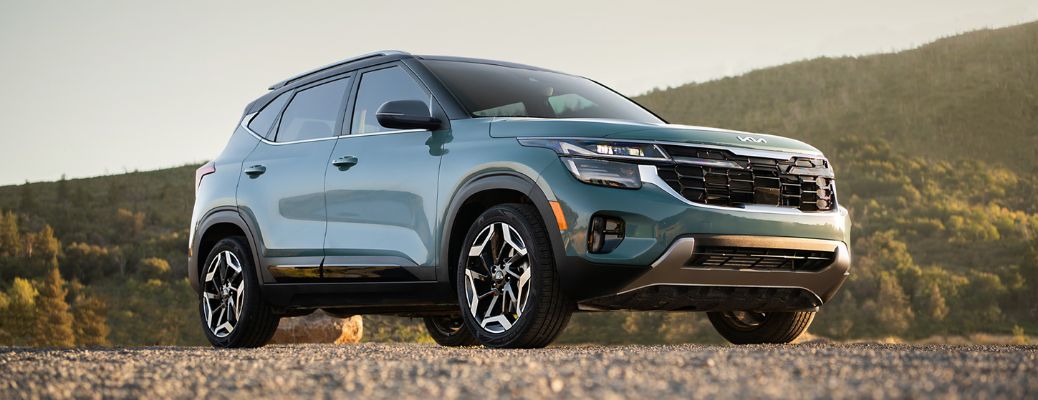
Key Takeaways
- Regular car washes help maintain the value of your vehicle by preventing rust, damage to the clear coat, and paint decay.
- Safety is improved with clean windshields, mirrors, and lights enhancing visibility.
- Regular car washes contribute to better fuel efficiency by reducing air drag.
- Car washes can reveal underlying issues before they become severe problems.
- Regular cleaning keeps the interior environment healthy by eliminating harmful germs and allergens.
A clean car is indeed a beauty to behold, but car washes do more than impart a shiny exterior to your beloved vehicle. Regular car washes are integral to automobile maintenance, enhancing its longevity, safety, and overall value.
Car owners often underestimate the significance of this simple and cost-effective preventive measure, but its benefits are worth more than the effort and time invested.
So, why wait? Start investing in your vehicle’s longevity today at Auffenberg Kia of Cape Girardeau. Our team of experts are always available to answer any maintenance related queries you may have.
Why Regular Car Washes Matter
The perks of regular car washes stretch far beyond the aesthetic appeal. They safeguard your car from the elements, ensure safe driving conditions, and help maintain your vehicle’s resale value. Here’s why you should include car washes in your car care routine.
Preventing Rust and Damage
The number one enemy of cars is rust. Dirt, salt, and other corrosive substances that stick to your car’s surface can eat into the paint and metal over time.
Regular car washes help remove these potentially damaging materials before they cause harm. By keeping your car clean, you’re protecting it from premature aging and decay.
Ensuring Safe Driving Conditions
A clean car is a safe car. Unclean windshields, mirrors, and lights can impair your visibility on the road, thereby increasing the risk of accidents.
Regular car washes to ensure that you have an unobstructed vision while driving, particularly in unfavorable weather conditions when visibility is already compromised.
Maintaining Car Value
Would you be more inclined to buy a well-maintained, clean car or one that’s dirty and uncared for? Regular car washes help retain the aesthetic appeal of your vehicle and, by extension, its resale value.
A frequently washed and waxed car will look newer and more appealing to potential buyers.
Fuel Efficiency
A lesser-known fact is that a clean car improves fuel efficiency. How so? Dirt and grime on your car’s surface increase air drag as you drive. The more drag your car experiences, the harder it has to work, which means more fuel consumption.
Regular car washes help keep your car’s surface smooth and clean, reducing air resistance and increasing fuel efficiency.
Detecting Problems Early
Regular car washes can also help in detecting potential problems early. While cleaning your car, you might notice minor scratches, dents, or other small damages that could worsen if left unattended.
This proactive detection allows for early repairs, saving you from hefty bills in the future.
Healthier Interior Environment
Besides the exterior, the car’s interior also benefits from regular clean-ups. Stains, dust, and allergens can accumulate inside your vehicle over time, leading to an unhealthy environment.
Regular cleaning can help eliminate these harmful particles, giving you and your passengers a healthier ride.
Contributing to Environmental Protection
Environmentally-friendly car washes use significantly less water than a hose in your driveway.
They also ensure the wastewater doesn’t pollute the local water system as it is correctly treated before discharge. By choosing eco-friendly car washes, you’re positively contributing to the environment.
Enhancing Image and Perception
Besides the tangible benefits, having a clean car also speaks volumes about your personality and how you handle essential assets. It conveys an image of responsibility, attention to detail, and respect for your belongings.
When people see you in a clean, well-maintained car, it sets a positive impression about your overall character and professionalism.
Extending the Lifespan of Car Parts
Over time, dirt and grime can make their way into different components of your car, causing them to wear out prematurely.
Regular car washes, particularly those that include undercarriage cleaning, can help prolong the lifespan of these parts.
This aspect of car maintenance might often go unnoticed, but it can significantly save you from unexpected expenses.
Preserving Paint Condition
Car washes are crucial in maintaining the condition and luster of your car’s paint. Bird droppings, dead bugs, tree sap, and other contaminants can adhere to your car’s paint, causing it to chip or flake over time.
You can remove these contaminants by washing your car regularly before they cause long-term damage.
Reducing Stress and Promoting Wellbeing
Believe it or not, a clean car can improve your mental well-being. Cleanliness brings a sense of order and tranquility, reducing stress and anxiety.
Furthermore, washing and cleaning your car can be a therapeutic activity that fosters a deeper connection between you and your vehicle.
So, consider car washes not just a chore but also a self-care activity that offers psychological benefits.
Preventing Sun Damage
Like our skin, a car’s paint job can suffer from prolonged exposure to the sun’s harmful ultraviolet (UV) rays. This can lead to fading, discoloration, and other forms of sun damage.
Regular car washes and an excellent waxing session can provide a protective layer to shield your vehicle from these damaging effects. This routine not only maintains the visual appeal of your car but also ensures its longevity.
Conclusion
In a nutshell, regular car washes offer multi-faceted benefits. They maintain the car’s shine, protect its body, enhance safety, preserve its value, and even contribute to fuel efficiency and environmental conservation.
So, rather than viewing car washes as cosmetic touch-ups, embrace them as a critical aspect of car maintenance.
And remember, if you’re looking for the best car wash experience, head over to Auffenberg Kia of Cape Girardeau. We offer top-notch services that guarantee your car stays in its best shape while helping you reap the comprehensive benefits of regular car washes.









